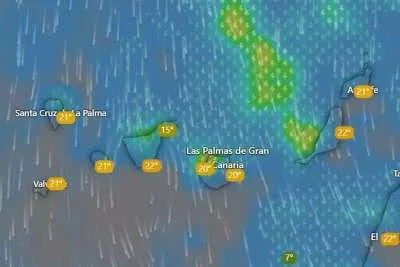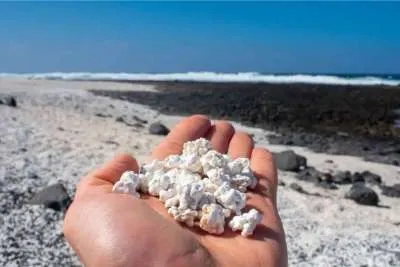2023 was the warmest and driest year in the Canary Islands for 62 years
- 21-12-2023
- National
- AEMET .
- Photo Credit: Stock Image
In 2023, the Canary Islands have witnessed the warmest and driest year since 1961, with an average temperature of 20.1 degrees Celsius and precipitation levels 25% below normal. The sea surface temperature also reached its highest point since 1940.
Victor Quintero, the director of the Tenerife Met Office Aemet, presented the climatic summary for the autumn of 2023 and the seasonal forecast for winter in the Canary Islands.
Quintero highlighted that up until November, 2023 has been the warmest year in the last 62 years, with an average temperature 1.5 degrees Celsius above normal values. This surpasses even the highest average temperatures recorded in 2017 and 2020, which were 19.6 degrees Celsius.
As for precipitation, it has been a dry year, with an average of 160.1 mm, accounting for only 76% of the normal precipitation. The water deficit has progressively increased throughout the year.
Record High Autumn Temperatures:
The Canary Islands also experienced the warmest autumn in the last 62 years, with an average temperature of 21.9 degrees Celsius, surpassing the previous average of 21.3 degrees Celsius. This anomaly of 2 degrees Celsius from normal values characterizes it as extremely warm.
Temperature records were broken at eight of the nine major AEMET stations across the islands. In some cases, such as the Izaña or Santa Cruz de Tenerife stations, they were the highest autumn temperatures recorded in the last 100 years. Specifically, the average temperature in Santa Cruz de Tenerife rose from 24.3 degrees in 1997 to 25.1 degrees in 2023, marking the highest autumn temperature since 1920.
October saw a 15-day heatwave from the 2nd to the 17th, and a very warm episode occurred in mid-November, although it did not qualify as a heatwave.
Dry Autumn:
Autumn proved to be a dry season, with an average precipitation of 55.5 mm, representing just 70% of the normal expected for this time of the year. While September was relatively humid, October and November were characterized by dry conditions.
Notably, the sea surface temperature during autumn was the highest since 1940, at 24.6 degrees Celsius, representing a 1.3-degree anomaly. Throughout autumn, the sea surface temperature remained consistently above the 95th percentile, indicating an extremely high average sea surface temperature with a low probability of such occurrences.
Winter Forecast:
Looking ahead to winter, temperatures in the archipelago are expected to be above average, with an anomaly ranging from 1 to 3 degrees Celsius. There is a 60% probability that the Canary Islands will experience a winter much warmer than usual.
Regarding precipitation, a water deficit is anticipated at the beginning of winter, with values expected to be below normal. There is a 33% probability that this dry trend will persist throughout the entire winter.
Other articles that may interest you...
Trending
Most Read Articles
Featured Videos
A Vision of Elvis Tenerife Promo
- 10-05-2025
TEAs 2025 Highlights
- 17-11-2025

























































